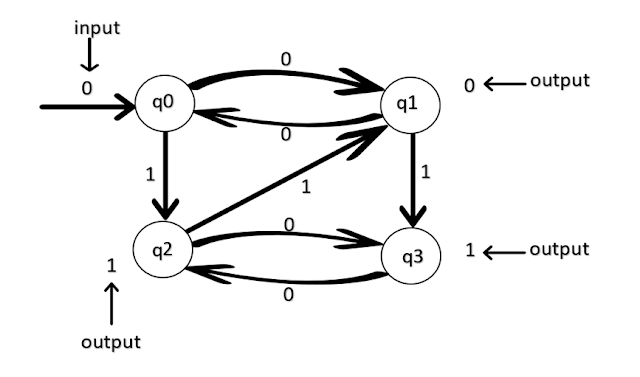Moore and Mealy Machine | Theory Of Computation (TOC)

Theory Of Computation | (TOC)Moore Machine Moore machine is an FSM whose outputs depend on only the present state. A Moore machine can be described by a 6 tuples M = ( Q, Σ, Δ, 𝛿, λ, q 0 ) Where, Q = finite set of states. Σ = finite set of symbols called the input alphabet. Δ = finite set of symbols called the output alphabet. 𝛿 = input transition function where 𝛿 : Q✕ Σ →Q λ = output transition function where λ : Q → Δ q 0 = initial state from Where any input is processed ( q 0 ∈Q).




